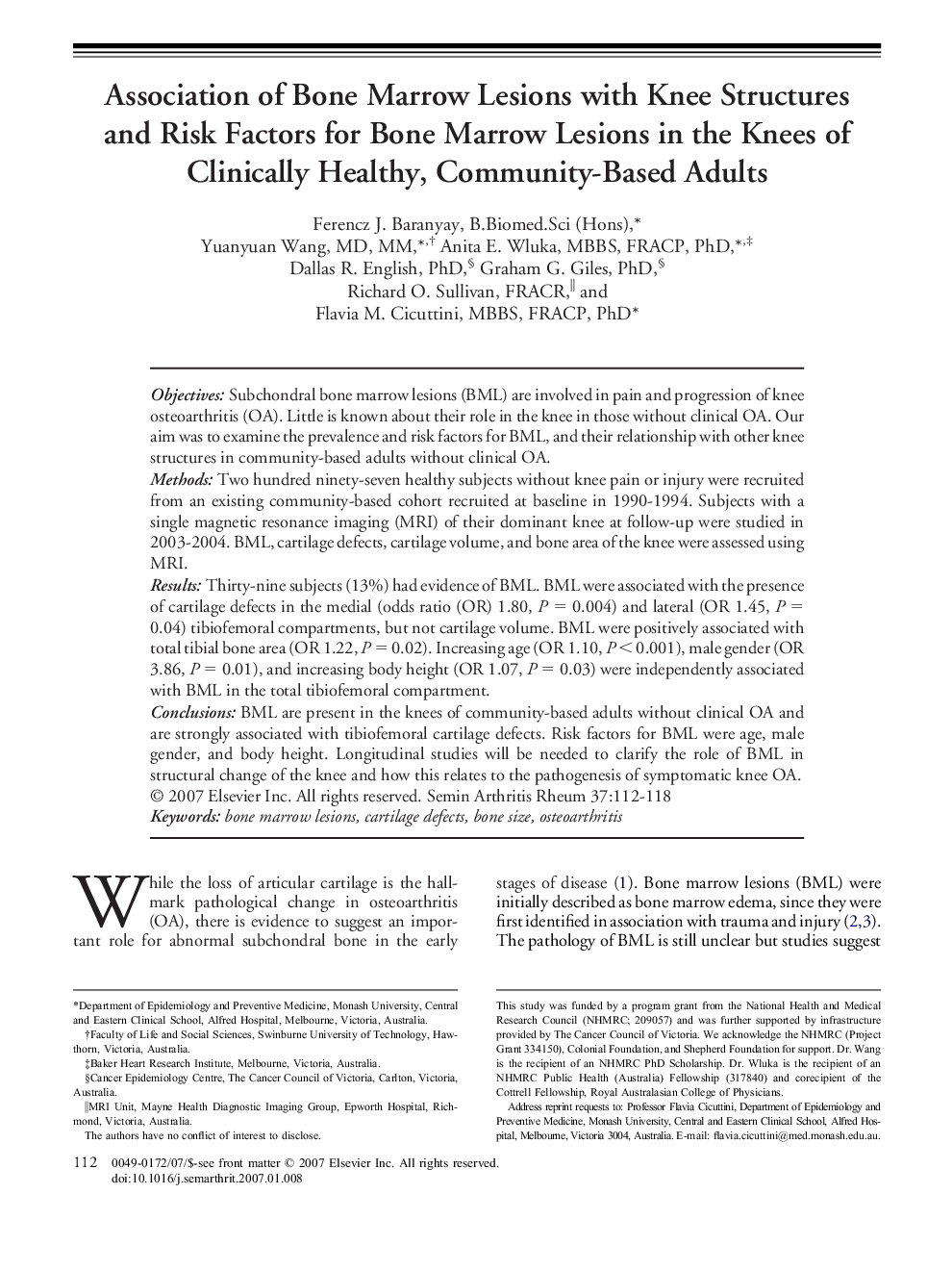| Article ID | Journal | Published Year | Pages | File Type |
|---|---|---|---|---|
| 2771939 | Seminars in Arthritis and Rheumatism | 2007 | 7 Pages |
ObjectivesSubchondral bone marrow lesions (BML) are involved in pain and progression of knee osteoarthritis (OA). Little is known about their role in the knee in those without clinical OA. Our aim was to examine the prevalence and risk factors for BML, and their relationship with other knee structures in community-based adults without clinical OA.MethodsTwo hundred ninety-seven healthy subjects without knee pain or injury were recruited from an existing community-based cohort recruited at baseline in 1990-1994. Subjects with a single magnetic resonance imaging (MRI) of their dominant knee at follow-up were studied in 2003-2004. BML, cartilage defects, cartilage volume, and bone area of the knee were assessed using MRI.ResultsThirty-nine subjects (13%) had evidence of BML. BML were associated with the presence of cartilage defects in the medial (odds ratio (OR) 1.80, P = 0.004) and lateral (OR 1.45, P = 0.04) tibiofemoral compartments, but not cartilage volume. BML were positively associated with total tibial bone area (OR 1.22, P = 0.02). Increasing age (OR 1.10, P < 0.001), male gender (OR 3.86, P = 0.01), and increasing body height (OR 1.07, P = 0.03) were independently associated with BML in the total tibiofemoral compartment.ConclusionsBML are present in the knees of community-based adults without clinical OA and are strongly associated with tibiofemoral cartilage defects. Risk factors for BML were age, male gender, and body height. Longitudinal studies will be needed to clarify the role of BML in structural change of the knee and how this relates to the pathogenesis of symptomatic knee OA.
